
“What’s the point of having a book club if you don’t get to eat brownies and drink wine?”
Jami Attenberg


I started making these brownies years ago. It’s from the Bakers Unsweetened Chocolate package. They are easy to throw together and I always have these ingredients on hand. I get request for this recipe often which must mean they are tasty. I reduce the sugar to about 1 3/4 cup sugar and they are just as yummy. I dedicate this recipe to all my book group women with whom I have had the pleasure of eating many brownies and drinking many glasses of wine.
- 1 pkg. (4 oz.) BAKER’S Unsweetened Chocolate
- 3/4 cup butter or margarine
- 2 cups sugar
- 3 eggs
- 1 tsp. vanilla
- 1 cup flour
- 1 cup coarsely chopped Pecans optional
- Heat oven to 350°F.
- Grease or spray pan with cooking oil and flour 13×9-inch pan
- Microwave chocolate and butter in large microwaveable bowl on HIGH 2 min. or until butter is melted. Stir until chocolate is completely melted. OR melt chocolate and butter over a double boiler until both are completely melted. Stir in sugar. Blend in eggs and vanilla. Add flour and nuts; mix well. Pour into prepared pan..
- Bake 30 to 35 min. or until toothpick inserted in center comes out with fudgy crumbs. (Do not overbake.) Cool completely.
- Enjoy

Be happy in the moment, that’s enough. Each moment is all we need, not more.
Mother Teresa



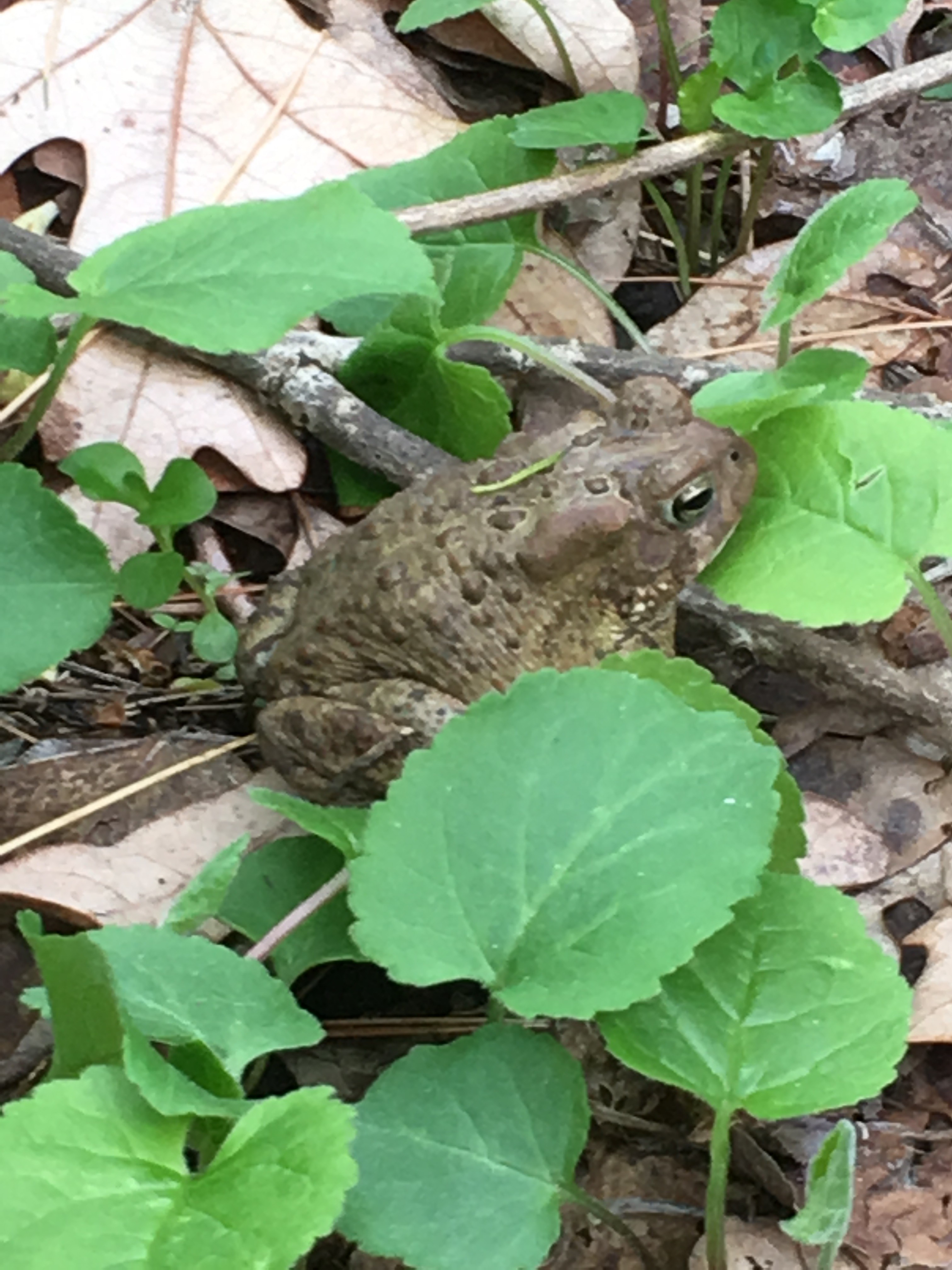
Bee with Allium, Carolina Spicebush, Ninebark, and a little froggy friend
Something I’ve noticed in my early days of blogging, I am looking deeper into my garden than ever before. Of course, I’ve always spent a lot of time in the garden, especially around this time of the year, but looking for pictures to take and ideas to write about has increased my level of awareness drastically. As if I’m seeing the world through a different lens, this is a welcome surprise for someone with years of gardening experience. I find myself paying more attention not only to all my plants and their particular cycles, but also to pollinators in a way that is new and exciting to me.




Blue star with Rhododendron , bee with Bachelors Buttons and Blueberries and Chokeberry

Now I’m more observant of all helpful insects in my garden not just the butterflies that are always so delightful to watch. As I gain more appreciation of all pollinators and their vital role I’m investigating how I can do more to help them flourish. By planting native plants in my garden I am providing corridors between wild lands and urban areas for insects to thrive . This year has seen a huge uptick in the number of pollinators already present in my garden. Every time I go outside, I encounter dozens of bees. Watching the bumblebees maneuver their fat little bodies through the air to pollinate my blueberries, native honeysuckle, blue star, wild geraniums, columbine, false indigo, chokeberry and all my other early bloomers is a treat. Seeing their little pollen baskets filled with pollen is quite incredible. What an exuberance these creatures have for hard work. I have observed that most pollinators seem to gravitate towards the native plants, preferring them over the non-natives. It will be interesting to see if this trend continues throughout the growing season.

Even if you have a small yard adding just a few native plants or perhaps one large shrub like serviceberry (Amelanchier) or a few choice perennials like false indigo (Baptisia), Blue star (Amsonia Hubrichtii) or Asters can give pollinators the corridors they need to thrive . Don’t forget our native grasses and sedges that can work wonders for both variety for the human eye and a smorgasbord to pollinators. Whatever you do go outside and enjoy the wild world right outside your own front door.

Trees and plants always look like the people they live with, somehow.
Zora Neale Hurston
My patient webmaster, brilliant photographer and wonderful husband took these images from around our garden this past weekend.








Hope you enjoyed these photos and they inspired you to go out and see what subjects you can find to take brilliant photographs.

I am going to try to pay attention to the spring. I am going to look around at all the flowers, and look up at the hectic trees. I am going to close my eyes and listen.
Anne Lamott
It’s been a very rainy spring here in New England but between rain drops I was able to capture a few pictures of what’s happening in the garden. At this time of year each day adds new sights, sounds and smells to the garden. It’s time go get outside and enjoy the longer days.

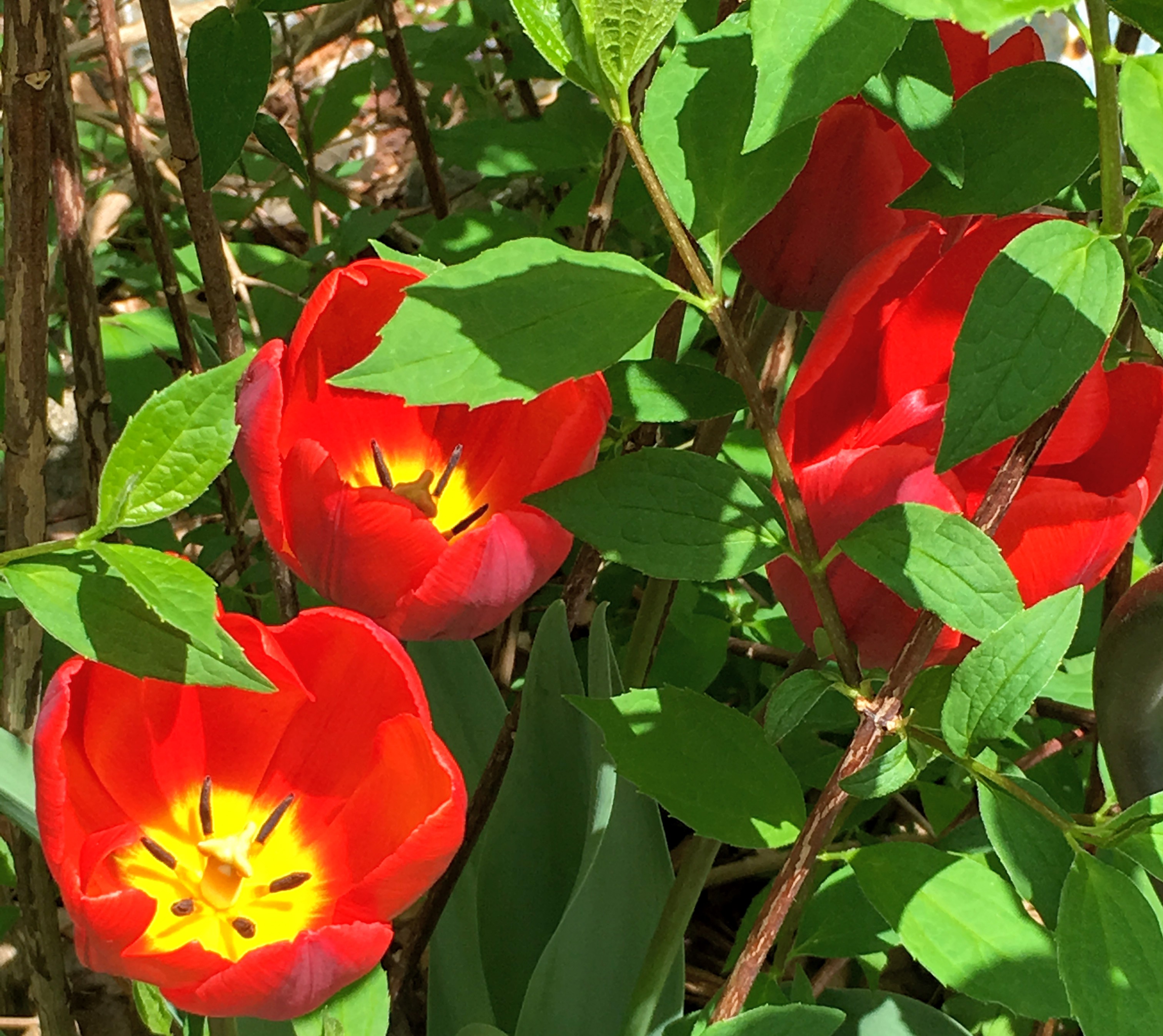


Spring flowering bulbs.





Trillium, trout lily and large flowered bellwort



Ferns and Aralia bursting onto the scene



Variegated Solomon’s Seal, Virginia Bluebells and Pulmonaria Trevi Fountain

Lilacs

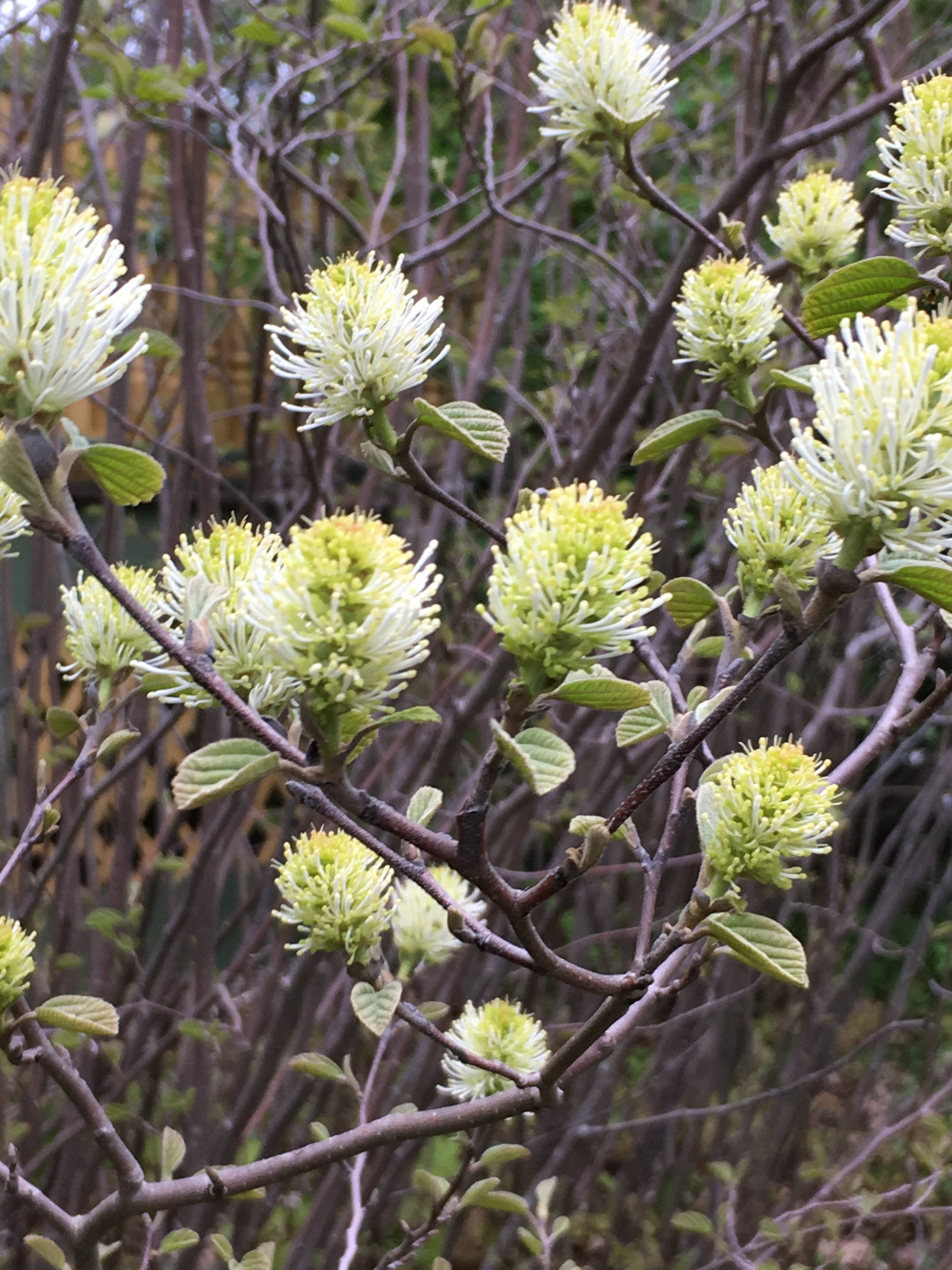


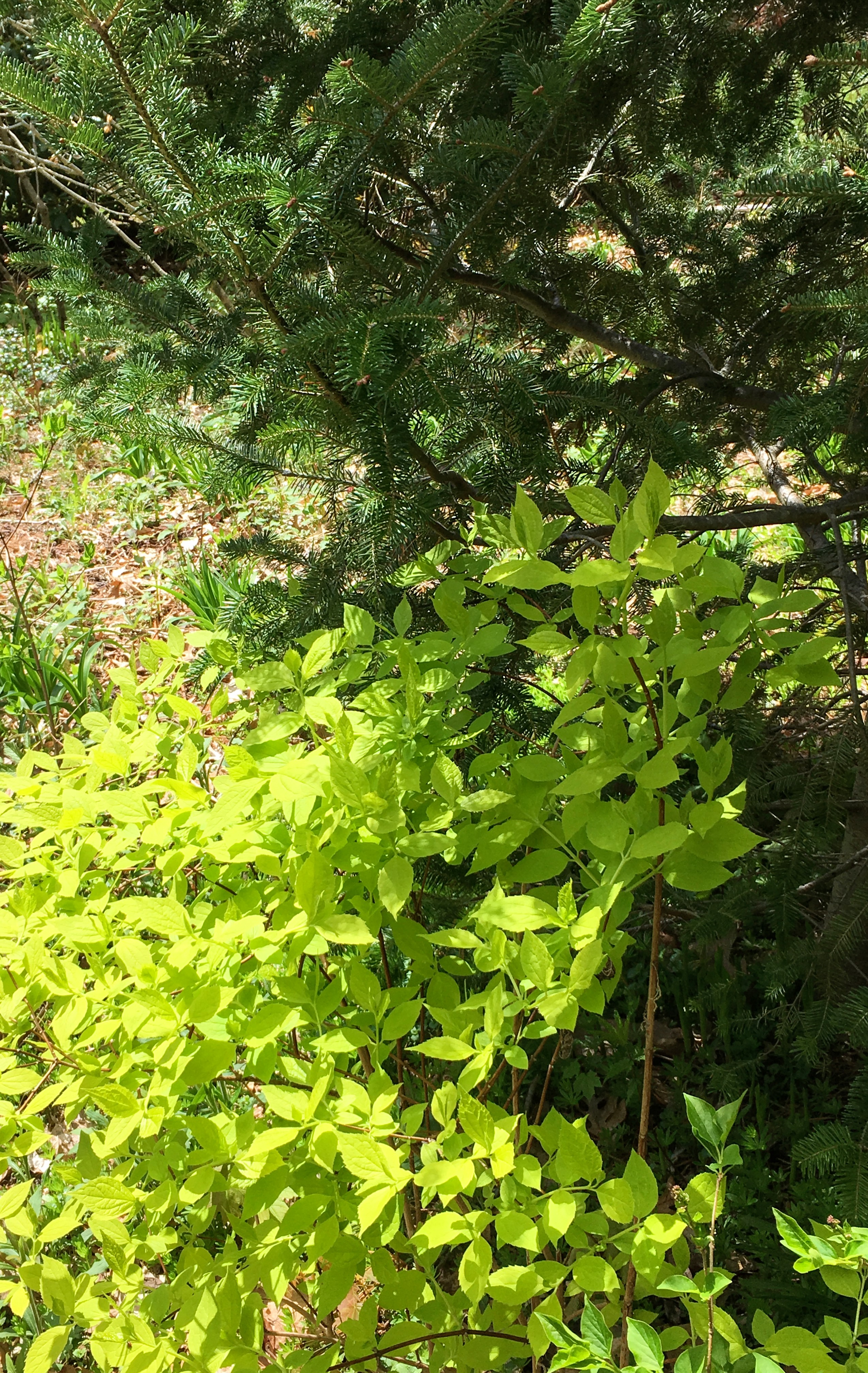
A smattering of shrubs around the garden
Anyone who gives you a cinnamon roll fresh out of the oven is a friend for life.
Daniel Handler

When my daughters were young, the whole family loved expensive, high-quality bread. We ate so much of it that one day I decided it would be a more affordable option to start making my own bread. I invested in a Korean Zojirushi full loaf bread machine. I’ve had it for fifteen years now, and it still works as well as it did when I first got it. I bought “The Bread Lover’s Bread Machine Cookbook” by Beth Hensperger to provide me with all the recipes I could ever want. The book itself is enormous – a mighty tome dedicated to bread making in all its variations and flavors.
My eldest daughter is discovering her love of baking and has adapted the bread machine recipes to make her own bread by hand. Here is her version of cinnamon swirl bread, which was always a favorite on early mornings when the girls were in high school. This bread is amazing – both sweet and filling at the same time. It’s best when hot and makes excellent toast.



HOLY COW CINNAMON SWIRL BREAD
Ingredients for a two-pound loaf:
- 1 ⅓ cups water
- ⅓ cup sugar
- 2 ½ teaspoons SAF yeast
- 3 tablespoons unsalted butter, melted or cut into pieces (or 3 Tablespoons Canola oil)
- 4 cups bread flour (OR 2 cups bread flour 2 cups white whole wheat flour)
- ¼ cup buttermilk (OR ¼ tablespoon lemon juice and ¼ cup milk)
- 1 tablespoon + 1 teaspoon gluten
- 1 ½ teaspoons salt
Ingredients for cinnamon swirl:
- ⅓ cup light brown sugar
- 1 tablespoon ground cinnamon
- OPTIONAL: ⅓ ish cup coconut flakes
Instructions:
- Combine yeast, sugar and water in a bowl. Let stand for 5 min
- Add butter, bread flour, buttermilk, gluten, and salt. Mix thoroughly. Knead for about 10 minutes, adding flour as necessary to make the dough less sticky
- Place in a (clean) bowl, cover with a towel, and leave in a warm spot for 1 – 1 ½ hours
- Remove dough and knead a few times before placing on a well-floured surface
- Cut dough in half and roll each half into 8×12 rectangles
- Melt 2 tablespoons unsalted butter in microwave
- Brush each rectangle with butter
- Sprinkle cinnamon mixture onto the rectangles, leaving a 1 inch border
- Starting at the short end, tightly roll up the rectangle into a loaf shape
- Tuck the ends under and pinch the seams shut
- Place loaves in separate oiled bread pans and cover with a towel. Leave in a warm spot for about 1 hour.
- Bake at 350 F for 20 minutes, then rotate the pans and bake for about 15 minutes until the bottom sounds hollow when tapped.
- Let cool for an hour or as long as you can stand smelling but not eating fresh bread.
- EAT!

The little things that run the world
Harvard biologist Edward O. Wilson
Little homes for little bugs
Now that spring is finally getting into its groove, I know you must be itching to get outside and take advantage of the newfound warmth and light. Especially now that the snow has melted, everyone wants to start cleaning up their messy gardens. It’s so hard not to instantly start cleaning up all the leaf litter you left on the garden last fall to help native insects overwinter. But hold on, where’s that concern for little local bugs now? We don’t just garden for humans (or, at least, we shouldn’t); we also need to always be aware of how much we’re giving back to all the little organisms that make our gardens great. Many native insects do not migrate, but instead are in diapause (a state akin to hibernation), resting in the hollow stalks of perennials and bushes. Cutting things back too early can deprive newly-awake insects of their cozy little homes. Don’t we owe our pollinators a place to stay while they warm up in the spring? Of course, once the temperature consistently reaches 50 degrees, it’s perfectly fine to start cleaning up leaves and stalks. By that time, all the little ones have had a chance to move out and start getting to work pollinating your flowers!

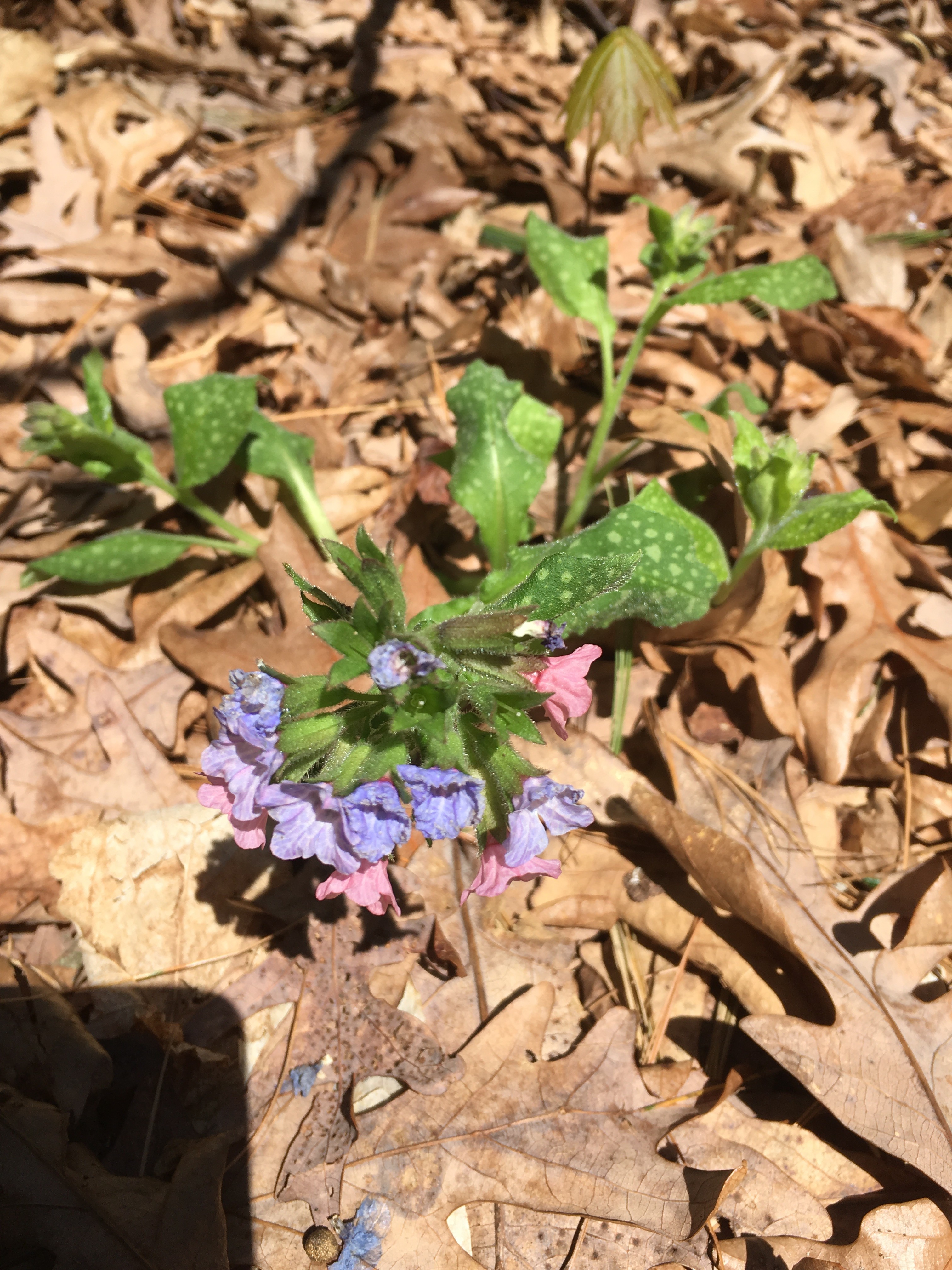
Carex blooms and Pulmonaria ‘Mrs. Moon’ in the leaf litter
If you’re still concerned about cutting things back even after temperatures have gotten higher, you can make a loose pile of cut perennial stalks on your compost bed or upright against a tree or fence. That way, you can be assured that everyone has had a chance to wake up at their own pace. Another option is to leave about 12”-18” of stalk when cutting back, giving little critters a place to stay while still maintaining a more organized garden.

As for the leaf litter on your beds, you can leave it where it is unless the leaves are too thick and are covering the crowns of your plants. There are so many beneficial adult insects that make their home in leaf litter, including the famously cute (and helpful) ladybug. A lot of insects also undergo several different life stages in leaf litter, so there may be the eggs and pupae of several different species growing up in your garden. This also provides much needed food for birds to forage, especially in the lean days of very early spring. In areas where you have planted small bulbs or have early ground cover that might have difficulty breaking through the leaf mass, you should gently take off just enough leaves to reveal the bulbs. Leaf litter also is a fabulous natural mulch that will keep your plants moist and improve your soil as it breaks down. Having leaves all over your garden might not fit with your perfectly organized vision of a neat and orderly garden, but it’s okay to be a little messy at times.
Happy spring gardening!

The glory of gardening: hands in the dirt, head in the sun, heart with nature. To nurture a garden is to feed not just on the body, but the soul.
Alfred Austin
Let’s talk about lawns. According to the National Audubon Society turf grass covers over 40 million acres of land across the U.S. We use 80 million pounds of pesticides and 800 million gallons of gas yearly to cut and care for our lawns. Millions of dollars are spent annually on the upkeep and maintenance of what is essentially a boring strip of grass. Why do people put so much work into something so bland? When did a perfect lawn of non-native turf grass become the symbol of a prosperous American family? The lawn is a European concept that somehow migrated from a status symbol of the ruling elite to the stereotypical hallmark of the American nuclear family. It could be argued that there are many reasons to keep your mildly appealing green turf. What will your neighbors say, what would you plant instead, and wouldn’t other plants take up even more of your valuable free time and resources? These are all valid concerns, but we have come to a place and time where our priority needs to be providing natural habitats for native insects and wildlife, not the pearl-clutching opinions of neighbors and visitors. Their lack of a habitat is directly our fault, and steps need to be taken immediately to begin to rectify our mistakes. Reducing the consumption of water, chemicals, and fossil fuels could not be more relevant to the future of our planet.
Now that we’ve firmly established the issues with the stereotypical American lawn, let’s talk about creative alternatives to it. Choosing plants is a personal way to express yourself, like a painter choosing a paint. Just like there are hundreds of paint types and colors, there are a myriad of plants out there to suit your own personal preferences. I’m not suggesting that you run right out and rip out your entire yard (even after my previous tangent about lawns, I have to admit that some turf grass is terribly useful especially for sports related activities) but perhaps you could start small. My advice is to start small, maybe designate a specific area to experiment with and learn what colors and plants you favor.

My front garden is on a slope leading into the road and was always difficult to mow or play in. I saw this as an great opportunity to dig it up. I replaced the turf grass with several varieties of plants, both native and non-native. I have several varieties of hostas, ferns, creeping phlox (Phlox stolonifera), Carex, Virginia Bluebells (Mertensia virginica) and Goatsbeard (Aruncus dioicus), to name a few.
My backyard still has a lawn – the only one left in my garden. When we first moved here, it provided an excellent place for my daughters to run and play. Now, with both girls grown and having flown the coop, I am considering putting in a meadow of tall grasses and wildflowers. In my vision, I would leave only enough turf grass for paths through the meadow, and maybe a spot to put up a hammock.
I like a lot of variety in my planting beds but don’t feel pressured to cover your entire yard in hundreds of different plants. It’s still your yard, and if you feel overwhelmed by the sheer abundance of options, it’s perfectly okay to just replace a patch of lawn with a low-maintenance ground cover species. A native species would be a simple replacement for turf grass, but could make a world of difference for beneficial local wildlife.
If you’re looking for shade plants, a good idea would be to create a border with Pennsylvania Sedge (Carex pensylvanica), which provides 36 different species with valuable food. If your tastes run towards the dramatic, you could interplant a bed of Carex with Mayapples (Podophyllum), which bloom in early spring and attract all number of woodland species. If you’d like more of an easygoing feel to your bed, wavy hair grass (Deschampsia flexuosa) might be just the ticket. It’s elegant, tough, and works well in dry shaded areas.



Blonde Ambition, Purple love grass, Pennsylvania Sedge
An idea for a sunny spot is wild native strawberry (Fragaria virginiana), which forms a semi-evergreen mat. Wild strawberry provides a tasty treat for insects, wildlife, and humans, and are highly recommended by Garden in the Woods, a botanical garden in Framingham, Massachusetts. There are also many native ornamental grasses that can be used as a more attractive alternative to turf grass. Some examples include purple love grass(Eragrostis spectabilis), blonde ambition (Bouteloua gracilis), or little false blue stem (Schizachyrium scoparium) to name but a few. Even the names sound exciting, especially compared to turf grass. Other ideas include creeping phlox (Phlox subulata), blue-eyed grass (Sisyrinchium bellum), and pussytoes (Antennaria plantaginifolia).
There are so many fun and creative ways you can express yourself while providing food and shelter for native species and cutting down on the use of pesticides and gasoline. If you’re still concerned about the comments from nosy neighbors, you can start in your backyard, or just disregard them and start out front and center. A little slice of backyard garden has benefits for everyone – a win/win. Go ahead, start dreaming, and plant something fun!


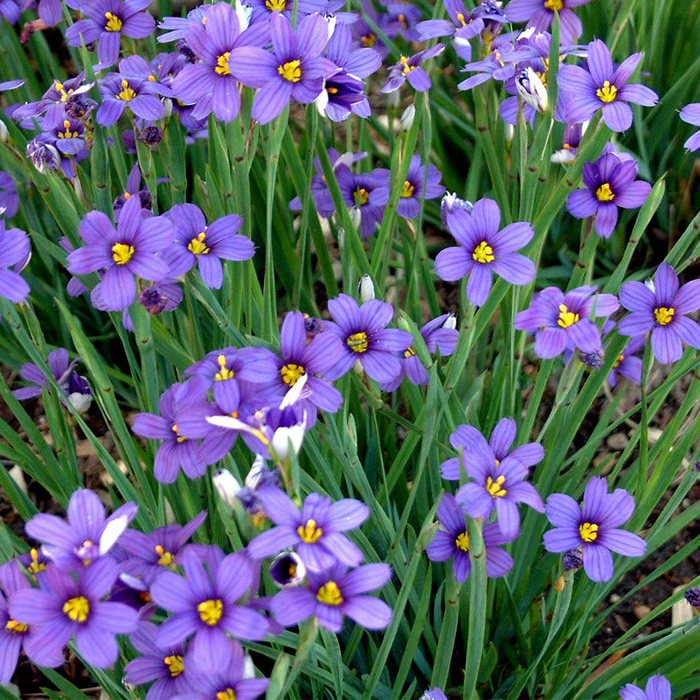
Virginia Bluebells, Native Bleeding Heart, Blue-eyed grass

The lesson I have thoroughly learnt, and wish to pass on to others, is to know the enduring happiness that the love of a garden gives.
Gertrude Jekyll
Here is a photo journal of what is happening in the garden this week. I will try to capture all that happens in the busy gardening season each week. April 15, 2019



Various Hellebores
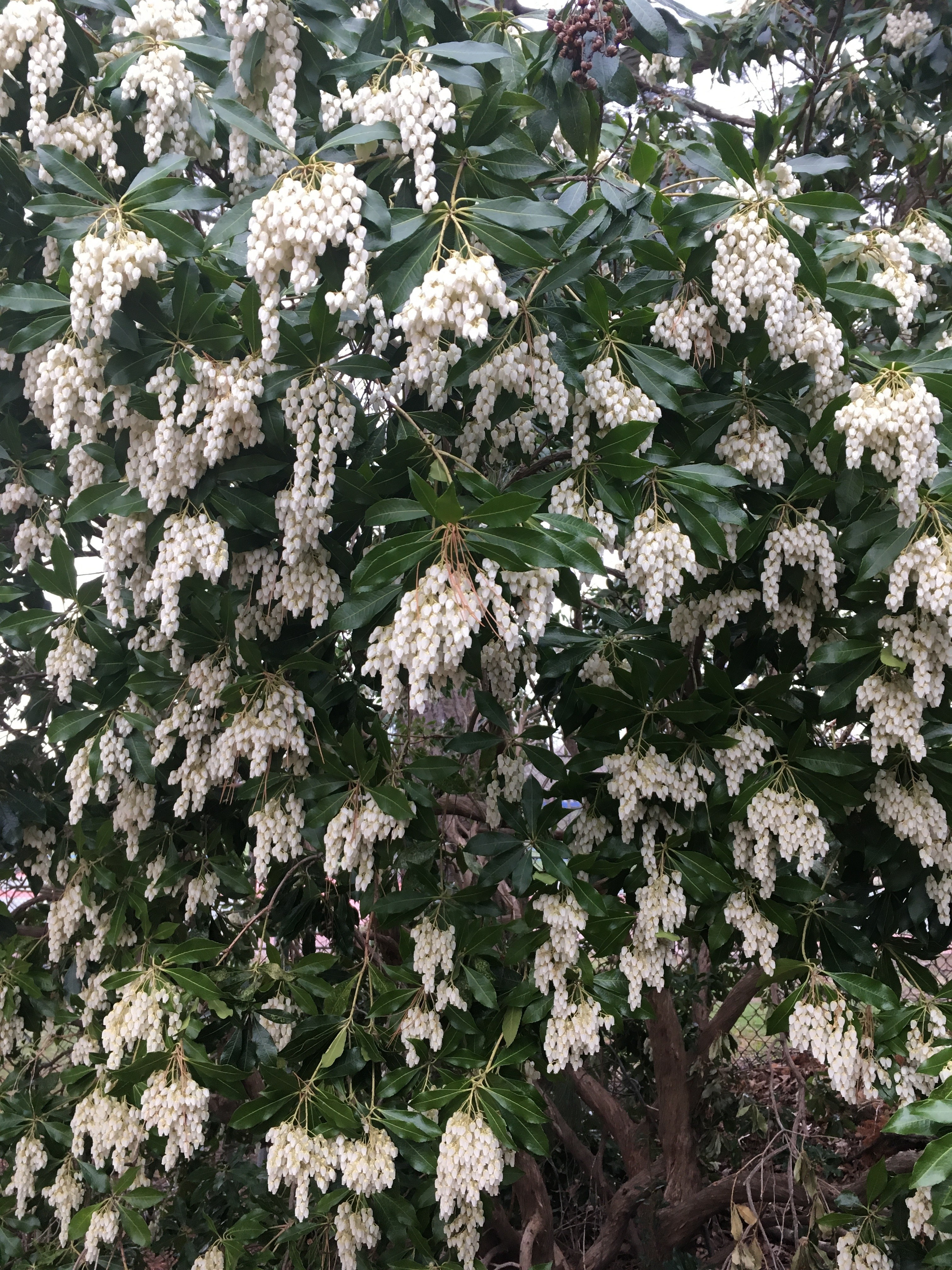


Pieris and Variegated Pieris


Daffodils and Scilla



Shield leaf, forsythia , Northern Spice bush

Are you ready for your closeup Ms. Hellebore


Springtime planters



Rhododendron ‘Cornell Pink”
Always remember that, nine times out of ten, you probably aren’t having a full-on nervous breakdown – you just need a cup of tea and a biscuit. You’d be amazed how easily and repeatedly you can confuse the two. Get a big biscuit tin.
Caitlin Moran
When I began to ponder writing a garden blog I thought of course I have to include recipes. I thought it would be an interesting challenge to see if I could do a cookie of the month recipe using only recipes that I have tried and tested many times. Here is the April installment for a Chocolate Ginger Molasses Cookies. A friend shared this recipe some years ago while we serving on a high school committee. This is a great recipe for shipping to college students as it holds up well through the shipping process. Happy Baking.

Chocolate Ginger Molasses Cookies
- 2 cups all-purpose flour
- 2 tbsp cocoa powder
- 2 tsp baking soda
- 2 tsp ground ginger
- 3/4 tsp cinnamon
- 1/2 tsp ground cloves
- 1/4 scant tsp salt
- 3/4 cup butter, softened
- 1/2 cup brown sugar
- 1/2 cup white sugar + 3 tbsp for rolling dough, divided
- 1 egg
- 1/4 cup molasses
- 1 tsp vanilla
- 1 cup semi-sweet chocolate chips
- Preheat oven to 325 F. Line two baking sheets with parchment paper.
- In a medium bowl, whisk flour, cocoa powder, baking soda, ground ginger, cinnamon, cloves and salt.
- In the bowl of an electric mixer, fitted with the paddle attachment, cream butter, brown sugar and 1/2 cup white sugar together until light and fluffy, about 2-4 minutes.
- Add egg, molasses and vanilla. Beat until combined.
- In two additions, with the mixer on the lowest setting, mix in the flour mixture. Finally, stir in chocolate chips
- Roll dough into 1 1/2 inch balls and coat in remaining 3 tbsp white sugar. Refrigerate for 15 minutes before baking.
- Bake for 10-12 minutes until the surfaces are slightly cracked. Let cool for 5 minutes then remove to a wire rack to finish cooling.
Recipe by Louisa Clements from Living Lou. While you are there check out her other fun recipes
I’ve always felt that having a garden is like having a good and loyal friend.
C.Z. Guest

Dealing with the long, cold winters of the North can really be a struggle for Massachusetts gardeners. Short days, long nights, almost no sunshine, and a complete lack of warmth can really drive you nuts. As a Florida girl, I’ve had to develop many winter coping strategies over the years, ranging from researching the perfect Caribbean getaway to trying to embrace winter and start doing winter sports. The latter tactic always starts out strong and gets progressively less enthusiastic as shoveling snow and clearing out frozen gutters takes up more and more of my time.



What I’ve found that consistently helps get me through the long winters is visiting my garden through the window. One of my favorite things to do in the morning is sit down with a cup of tea on my frosty back porch and look at all the birds and squirrels searching for food amongst the snowdrifts. Recently I spotted a huge red tailed hawk sitting on my Weeping Katsura tree, looking back at me with his big golden eyes. It was -4 degrees out, so he was all fluffed up to stay warm. As I write this, I just saw him swoop down again into the yard. It’s always an honor to catch a glimpse of such a gorgeous bird. I just hope he’ll stay long enough to put a damper on the local rabbit population – what a lucky break that would be!
Our bird feeders also attract quite a variety of local birds. I always love seeing bright red cardinals flitting about the feeder looking for food. Their crimson plumage is a welcome change from the drab colors of winter. Blue jays also frequent my backyard, always squawking at each other, all puffed up like self-important businessmen. Even squirrels, the bane of a full bird feeder, are genuinely fun to watch, chattering to themselves as they perform all sorts of acrobatic stunts to get at the birdseed. Despite the numerous attempts at DIY squirrel-proofing, they always manage to get onto at least one of the four bird feeders and wreak some havoc. They really are adorable, though, especially when they’re all fat and fluffy for the winter.

Another perk of “window gardening”, as I like to call it, is watching the ice crystals melt off the tree branches. The dripping meltwater catches the sunlight reflecting off the snow and is truly stunning. The other big advantage of window gardening is that it doesn’t require much work, only time and a desire to observe. It almost feels like going to the beach and watching the waves in terms of how relaxing and meditative it can be. In our busy, hectic world, I urge you to try and spend some time window gardening. If you look long enough, you’ll always catch a show right outside your window.
If we plant the right seeds, tomorrow will be better. If you put out good things, then you’ll get good things back.
Ben Vereen
When spring finally arrives, everyone can’t wait to get outside and revel in beautiful new plants and finished gardens. Alas, gardens unfortunately don’t just pop up overnight the first time the temperature hits fifty degrees. Instead, they evolve not only over the years but over the long gentle days of spring and summer, growing and changing gradually.

If you plan your garden well, you should always have a bit of excitement to look forward to throughout the entirety of the growing season. If there are areas of your garden that you feel need to be changed or lack continuity, my advice is to always have a plan. If you don’t have at least a general idea of what plants you want, the lure of all those beautiful early blooming flowers at the nursery is going to be overwhelming for both you and your wallet. Just because something looks nice at the nursery doesn’t mean it will align with your vision once you get it home.
Walking into a garden center in spring is akin to walking into a pet shelter full of the most adorable kittens and puppies that absolutely need to be taken home by you. It may be easier to resist taking home all those cute, furry babies at the pet shelter, but it’s a lot harder to stop yourself from adopting a few stray plants from the nursery. What could be the harm in a couple extra plants for the garden? This can detract from your original purpose, eat into your gardening budget and distract you from your original goals.
Stopping yourself from buying every cute little perennial that you happen upon is easier said than done. What I do is take the ‘impulse’ part out of the impulse buy. When I shop for plants, I sometimes pick up a few strays that catch my eye and put them in my cart along with the plants I originally wanted. As I walk around the nursery, I try to think if these new plants will serve me a week or even a month from now. It’s important to remember that annuals can’t go into the ground until Memorial Day in our lovely Zone 6 climate, so perhaps limit your impulses to perhaps just a pot or two that really offer something new and exciting. It’s important to have fun, but also try to restrain yourself a little. Again, this is easier said than done after enduring the long grey winters here in New England.

Don’t forget, some of the best places to shop for plants are local garden club plant sales, extension schools and botanical gardens. In the Metro-west Boston area specifically, we have several nurseries specializing in particular plant species these can be a real treat to explore. Make a date, plan a lunch, and don’t forget your list!

Poetry is the synthesis of hyacinths and biscuits.
Carl Sandburg

Growing up, a lot of my summers were spent in Alabama. As anyone in ‘Bama will tell you, there is no better cure for the sweltering summer days than good fresh produce. We have such a long growing season that tomatoes and peaches in particular do beautifully in the hot sun. When I miss those hot southern days and drippy humid nights, I tend to go to my kitchen and do my best to recreate the memories of our big vegetable dinners on Grandmother Riley’s back patio. There would be heaping dishes of fried okra, sweet cream corn, purple hulled peas, collard greens, Aunt Eleanor’s yeast rolls, Grandmother Riley’s cornbread (not the sweet cakey type favored by northerners), and platters of red juicy tomatoes. Everything was fresh and delicious, all washed down with glasses of sweet ice tea. Over the years I have tried to mimic those recipes and make them a bit healthier to share my southern heritage with my family.

What I’m going to share today is a slightly healthier version of southern biscuits. Having dependable quick bread recipes is invaluable when you run out of bread or forget to pick some up at the store. Unlike yeasted bread, biscuits can be made in a jiffy. I use the Tassajara Bread Book recipe, which is a book I highly recommend as a comprehensive guide to home bread making. When baking, I always use King Arthur flour. They have a white whole wheat flour that isn’t as dense as regular whole wheat flour, which I really recommend for baking.
Flaky Biscuits
- 1 cup unbleached white flour
- 1 cup whole wheat flour
- 3 teaspoons baking powder
- 1/2 teaspoon salt
- 1/2 cup butter ( I use a little less than a 1/2 cup about 1 tablespoon less)
- 2 eggs beaten
- 1/2 cup of milk ( I use buttermilk if I have it on hand)
Combine flours, baking powder and salt. Cut butter into dry ingredients with pastry knife or two knives until pea-sized pieces are formed. Make well in the center of mixture and stir until smoothish. ( to save on dishes I pour in milk then beat the eggs in the measuring cup I used for the milk) Continue stirring gradually incorporating flour, until all is moistened. On a floured board, knead dough just enough to bring it together.
Roll dough into a rectangle 1/2 inch thick. Fold into thirds. Turn the dough a quarter turn and repeat rolling and folding. Repeat once more. ( The rolling and folding make a flakier biscuit)
To make biscuits roll out dough one last time to 1/2 thickness. Cut into rounds with a floured glass ( this is what my grandmother always used) or a round biscuit cutter. Place on an ungreased sheet and bake at 450 for 8-10 minutes until bottoms are slightly brown and tops are slightly golden. Keep an eye on them so they don’t over bake. After baking them once you will have a better idea how fast they cook in your oven.
For cheesy Biscuits add
- 1 3/4 cups grated Parmesan cheese ( or Pecorino,Cheddar or provolone)
- 1 tablespoon of dried crushed Rosemary (or Sage or Thyme or Oregano)
Follow the Flaky biscuit recipe then add cheese and herbs to flour and butter mixture before adding eggs and milk. Follow the same procedure for shaping and baking biscuits.